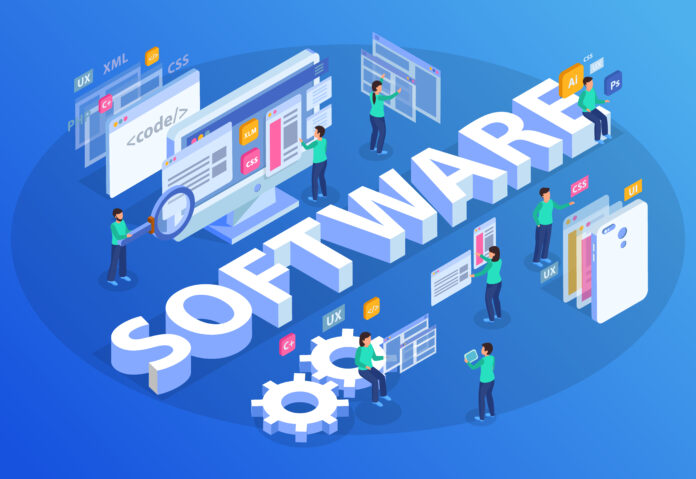Implementing a new software solution can be a game-changer for your business. From boosting efficiency to driving innovation, the right software can unlock a world of possibilities. But the journey to a successful implementation can be daunting. Fear not! In this guide, we’ll walk you through the essential steps to seamlessly install and configure your new software, empowering your organization to reap the rewards.
Successful Management of Software Implementation
Pre-Implementation:
-
Obtaining the Software:
-
Researching and evaluating different software options that meet the organization’s requirements
-
Considering factors such as licensing models, pricing, vendor reputation, and feature sets
-
Example: Evaluating product management software like Trello, Asana, or Jira to find the best fit for the organization’s needs
-
-
Preparing the System:
-
Assessing the existing hardware and software infrastructure to ensure compatibility with the new software
-
Upgrading or replacing outdated components as necessary
-
Configuring network settings, firewall rules, and other system-level configurations
-
Example: Ensuring the organization’s servers and workstations meet the minimum system requirements for the new (enterprise resource planning) ERP software
-
-
Understanding the Software Requirements:
-
Conducting stakeholder interviews to gather detailed requirements and objectives for the software
-
Documenting the functional, non-functional, and technical requirements
-
Identifying any integration points with existing systems or processes
-
Example: Defining the specific reporting and workflow requirements for a new (customer relationship management) CRM software
-
Implementation Phases:
-
Installing the Software:
-
Obtaining the necessary installation files and/or media
-
Following the vendor’s instructions for a successful installation, often including steps like creating database instances and configuring server settings
-
Performing the installation in a controlled, step-by-step manner to minimize disruptions
-
Example: Installing a new enterprise content management (ECM) system on a dedicated server, ensuring all prerequisite software components are in place
-
-
Configuring the Software:
-
Tailoring the software’s settings and parameters to match the organization’s specific needs
-
Integrating the software with other systems, such as accounting, HR, or e-commerce platforms
-
Defining user roles, permissions, and access controls
-
Example: Configuring a new (business intelligence) BI software to connect to the organization’s data sources, create custom dashboards, and set up user access levels
-
-
Testing the Software:
-
Developing a comprehensive test plan to validate the software’s functionality
-
Performing unit tests, integration tests, and end-to-end tests to ensure the software is working as expected
-
Involving end-users in the testing process to gather feedback and identify any usability issues
-
Example: Testing a new HR software by verifying the accuracy of employee data, the functionality of leave request workflows, and the generation of payroll reports
-
- Troubleshooting Common Installation Issues:
-
Identifying and resolving any errors or problems that arise during the installation process
-
Analyzing log files and error messages to diagnose the root cause of the issues
-
Collaborating with the software vendor’s support team to find solutions for complex problems
-
Example: Troubleshooting a failed installation of a new accounting software due to a missing database driver, and working with the vendor to find the appropriate resolution
-
Post-Implementation:
-
Maintaining the Software:
-
Implementing a regular maintenance schedule to ensure the software remains up-to-date and secure
-
Applying software updates, patches, and bug fixes as they become available
-
Monitoring the software’s performance and availability, and addressing any issues that arise
-
Example: Keeping a customer support ticketing system up-to-date by applying the latest security patches and monitoring system logs for any unusual activity
-
-
Training Users:
-
Developing comprehensive training materials, such as user manuals, video tutorials, and hands-on workshops
-
Providing ongoing support and training to ensure users are comfortable and proficient with the software
-
Gathering user feedback and adjusting the training program as needed
-
Example: Delivering a series of training sessions for a new enterprise resource planning (ERP) system, covering topics like data entry, reporting, and workflow management
-
-
Evaluating the Software:
-
Gathering user feedback and measuring the software’s performance against the initial requirements and objectives
-
Analyzing usage data, such as adoption rates, productivity metrics, and return on investment
-
Identifying areas for improvement and determining if the software is still the best fit for the organization’s needs
-
Example: Conducting a comprehensive review of a newly implemented (customer relationship management) CRM workflows, including surveys, usage analytics, and a cost-benefit analysis to assess its effectiveness and identify areas for enhancement.
-
By addressing this sequential approach, organizations can set the foundation for a smoother and more successful software implementation process, leading to better outcomes and a stronger return on investment.
How to Ensure a Safe and Successful Software Installation?
Installing new software can be exciting, but it’s important to prioritize safety and success. Here are some key steps to take:
Before Installation:
- Download software from trusted sources, read reviews, and ensure compatibility.
- Create a backup of your important files.
- Close unnecessary programs and ensure enough disk space.
- Familiarize yourself with the installation instructions.
During Installation:
- Read prompts and warnings carefully, and be wary of additional software.
- Provide administrator privileges only if necessary.
- Temporarily disable antivirus software if it interferes with the installation.
- Choose custom installation if available to have more control.
After Installation:
- Restart your computer to allow the changes to take effect.
- Test the software to ensure it works as expected.
- Check for and install any available updates.
Uninstall Properly (if needed):
- Use the official uninstall process provided by the program.
By following these steps, you can significantly increase your chances of a safe and successful software installation. Remember, if you encounter any issues during the process, don’t hesitate to consult the software’s documentation, online forums, or the developer’s support channels for assistance.

How to Measure the Success of a Software Implementation?
Measuring the success of a software implementation goes beyond simply getting the software installed and running. It’s about evaluating how effectively the software meets the goals you set for it. Here’s a breakdown of key areas to consider:
-
Business Goals:
-
Increased Efficiency: Did the software streamline processes, leading to faster completion times and reduced manual effort?
-
Cost Savings: Are you seeing a decrease in operational costs due to the software implementation?
-
Improved Revenue: Has the software helped generate more sales, leads, or customer conversions?
-
Enhanced Decision-Making: Does the software provide better data and insights to support informed decision-making?
-
-
User Adoption & Engagement:
-
Active Users: How many users are regularly using the software?
-
User Satisfaction: Are users finding the software helpful and easy to use? Conduct surveys or gather feedback.
-
Reduced Training Time: Did the software require minimal training, minimizing disruption to user productivity?
-
Increased User Productivity: Are users now able to accomplish tasks more efficiently with the software?
-
-
Technical Performance:
-
System Uptime & Stability: Is the software running smoothly with minimal downtime or crashes?
-
Meeting System Requirements: Does the software perform as expected based on your hardware and network specifications?
-
Integration Success: Are different systems working together seamlessly after the software implementation?
-
Reduced Errors: Have the number of errors or data inconsistencies decreased with the new software?
-
-
Return on Investment (ROI):
-
Cost vs. Benefits: Compare the initial investment in the software to the tangible and intangible benefits it delivers.
-
Payback Period: How long did it take to recoup the costs associated with the software implementation through generated benefits?
-
-
Remember:
-
Define Success Metrics Beforehand: Establish clear and measurable goals for the software implementation before you begin. This will guide your choice of metrics to track.
-
Use a Balanced Approach: Don’t rely solely on one metric. Consider a combination of business goals, user feedback, and technical performance data for a holistic view.
-
Track Progress Over Time: Monitor your chosen metrics regularly to gauge the software’s impact and identify areas for improvement.
-
Gather Feedback Continuously: Solicit feedback from users and stakeholders throughout the process to understand their experience and identify areas for future optimization.
-
By effectively measuring the success of your software implementation, you can demonstrate the value it brings to your organization and make informed decisions about future software investments.
How to Ensure User Adoption of a New Software System?
User adoption is crucial for a software implementation’s success. Here are some key strategies to ensure users embrace the new system:
-
Before Launch:
-
Involve users early in the selection and planning process.
-
Clearly communicate the benefits and address user concerns.
-
-
Training and Support:
-
Provide tailored training catered to different learning styles and skill levels.
-
Focus on how the software solves user problems and offers support after launch.
-
-
User Experience:
-
Ensure a clean, intuitive interface with customization options.
-
Highlight early user successes and provide recognition.
-
-
Change Management:
-
Set realistic expectations and address resistance to change.
-
Use positive reinforcement to encourage continued use.
-
-
Continuous Improvement:
-
Gather user feedback and analyze data to identify areas for improvement.
-
Be prepared to make adjustments based on user input and usage patterns.
-
By implementing these strategies, you can drive successful user adoption and maximize the value of your software investment.
Building a Culture of Software Implementation with STAQ.ai
Ensuring successful user adoption of a new software system is an ongoing process. By following the strategies outlined above, you can create a foundation for a smooth transition and maximize the benefits of your investment. However, true success goes beyond simply implementing the software.
Even with the right software selection, ongoing efforts are essential for user adoption. STAQ.ai focus on unbiased recommendations and user needs aligns perfectly with building a culture of continuous improvement. STAQ.ai’s role can extend beyond initial selection to provide insights into emerging software solutions that might further enhance user workflows and address evolving business needs.




